Junyang Ren
Timeline-based Sentence Decomposition with In-Context Learning for Temporal Fact Extraction
May 16, 2024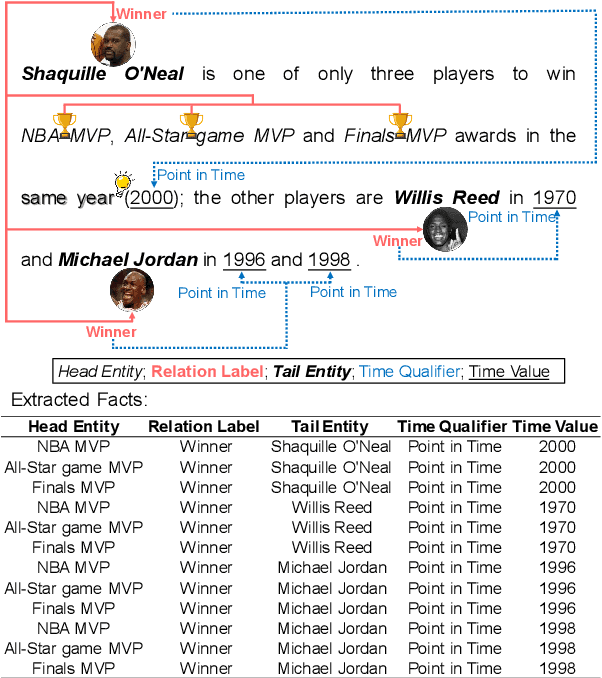
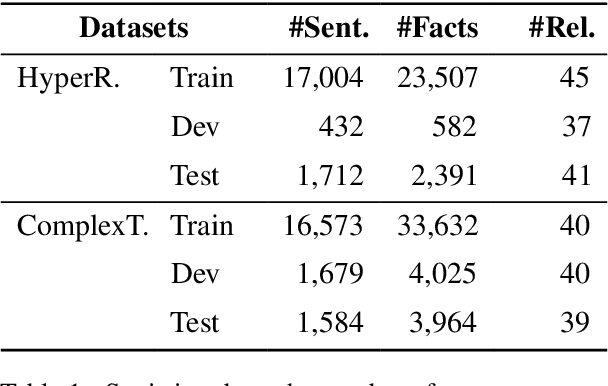
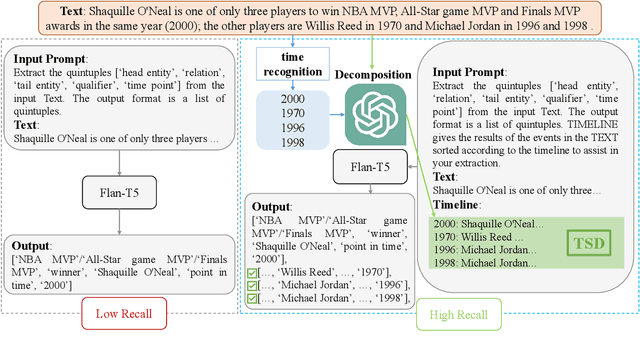
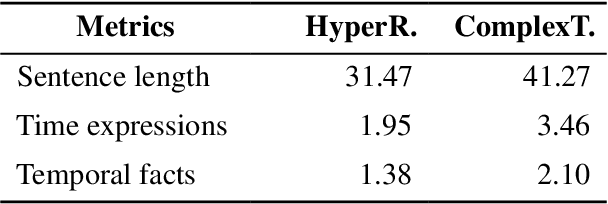
Abstract:Facts extraction is pivotal for constructing knowledge graphs. Recently, the increasing demand for temporal facts in downstream tasks has led to the emergence of the task of temporal fact extraction. In this paper, we specifically address the extraction of temporal facts from natural language text. Previous studies fail to handle the challenge of establishing time-to-fact correspondences in complex sentences. To overcome this hurdle, we propose a timeline-based sentence decomposition strategy using large language models (LLMs) with in-context learning, ensuring a fine-grained understanding of the timeline associated with various facts. In addition, we evaluate the performance of LLMs for direct temporal fact extraction and get unsatisfactory results. To this end, we introduce TSDRE, a method that incorporates the decomposition capabilities of LLMs into the traditional fine-tuning of smaller pre-trained language models (PLMs). To support the evaluation, we construct ComplexTRED, a complex temporal fact extraction dataset. Our experiments show that TSDRE achieves state-of-the-art results on both HyperRED-Temporal and ComplexTRED datasets.
Conflict Detection for Temporal Knowledge Graphs:A Fast Constraint Mining Algorithm and New Benchmarks
Dec 18, 2023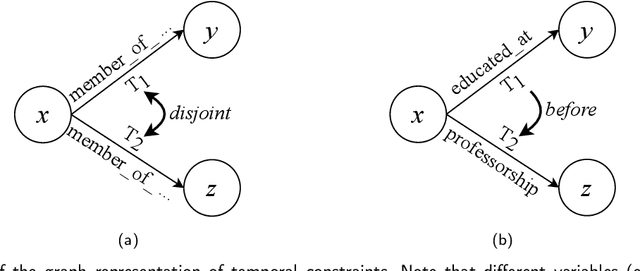
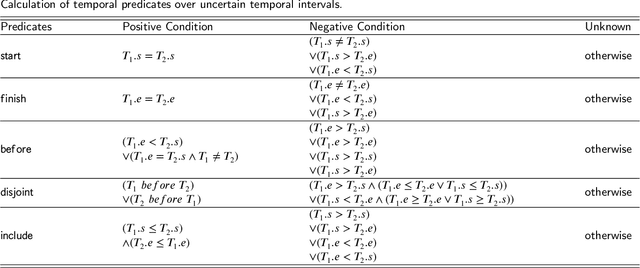
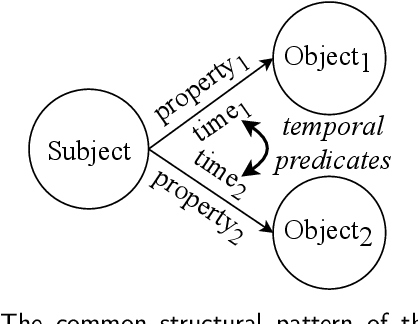

Abstract:Temporal facts, which are used to describe events that occur during specific time periods, have become a topic of increased interest in the field of knowledge graph (KG) research. In terms of quality management, the introduction of time restrictions brings new challenges to maintaining the temporal consistency of KGs. Previous studies rely on manually enumerated temporal constraints to detect conflicts, which are labor-intensive and may have granularity issues. To address this problem, we start from the common pattern of temporal facts and propose a pattern-based temporal constraint mining method, PaTeCon. Unlike previous studies, PaTeCon uses graph patterns and statistical information relevant to the given KG to automatically generate temporal constraints, without the need for human experts. In this paper, we illustrate how this method can be optimized to achieve significant speed improvement. We also annotate Wikidata and Freebase to build two new benchmarks for conflict detection. Extensive experiments demonstrate that our pattern-based automatic constraint mining approach is highly effective in generating valuable temporal constraints.
PaTeCon: A Pattern-Based Temporal Constraint Mining Method for Conflict Detection on Knowledge Graphs
Apr 23, 2023



Abstract:Temporal facts, the facts for characterizing events that hold in specific time periods, are attracting rising attention in the knowledge graph (KG) research communities. In terms of quality management, the introduction of time restrictions brings new challenges to maintaining the temporal consistency of KGs and detecting potential temporal conflicts. Previous studies rely on manually enumerated temporal constraints to detect conflicts, which are labor-intensive and may have granularity issues. We start from the common pattern of temporal facts and constraints and propose a pattern-based temporal constraint mining method, PaTeCon. PaTeCon uses automatically determined graph patterns and their relevant statistical information over the given KG instead of human experts to generate time constraints. Specifically, PaTeCon dynamically attaches class restriction to candidate constraints according to their measuring scores.We evaluate PaTeCon on two large-scale datasets based on Wikidata and Freebase respectively. The experimental results show that pattern-based automatic constraint mining is powerful in generating valuable temporal constraints.
 Add to Chrome
Add to Chrome Add to Firefox
Add to Firefox Add to Edge
Add to Edge